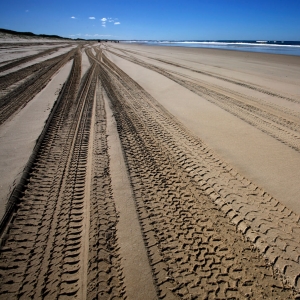
Dr. Kevin McKerrow
DERMATOLOGIST
+ SEE BIO
Scar formation is a natural part of the skin’s healing process whereby the body tries to repair damage, producing fibrous tissue called a scar. Scars are composed of collagen, the same material present in healthy skin, but in scars these fibres usually align in one direction rather than the random basket-weave pattern that gives normal skin its suppleness and strength. As well, scar tissue also does not re-grow sweat glands and hair follicles. They are often depressed, elevated, pink, red or shiny and can cause itching, tenderness, pain and a decreased range of motion.
Two common types of scarring seen in the skin are hypertrophic and keloid scarring, both of which are caused by excess collagen growth during the healing process, resulting in a firm, raised, purplish/red scar. Hypertrophic scars result in a raised scar compared to the surrounding skin. Keloid scars are hypertrophic scars which grow larger and outside the original wound area, and can occur in anyone but most commonly in dark-skinned people.
There are certain factors that increase the likelihood of hypertrophic and keloid scars which include age, location of trauma, nature of the injury, patient race and surgical technique, all of which play a role in the development of hypertrophic and keloid scarring. Such scars are more common in young adults and are more likely to occur on scars on the chest, shoulders, back and jawline areas. Hypertrophic/keloid scars are more common in Asians and dark skin types and are also more common in acne patients, burn injuries and surgical excisions.
Hypertrophic and keloid scars are more common if poor surgical technique is initially performed. To reduce the incidence of these scars it is essential that wounds be orientated correctly at the time of surgical removal of a lesion, that tension is reduced and special non-reactive sutures are placed within the wound.
Keloids can be caused by acne, body piercings, surgery, tattoos or any injury or inflammation of the skin. Keloids are much more common on the chest, shoulders, upper back, arms and ear lobes and also tend to itch and be painful. A combination of treatments produce the overall best result, including silicone sheeting applied to the scar, injections of intralesional steroid/Five Fluorouracil, pulse dye laser treatments and fractionated CO2.
Several factors influence how your skin scars. Some individuals are at a higher risk of developing scars, including those with severe acne, coloured skin, a family history of scars, a history of keloid scarring or individuals where a surgical procedure has been operated in a high risk area, such as the chest and upper arms. Most scars may improve over time. They never disappear completely and can be aesthetically disfiguring and unappealing.
Having a specialist dermatologist identifying your scar will result in treating the scar appropriately and providing proper counselling. Specialist dermatologic surgeons take special precautions when treating people who are more prone to scarring, to deliver the best aesthetic result as well as a medical outcome. At the Skin Specialist Centre, our specialist dermatologists are expert in treating all scar types.
Scars form in response to injury to the skin for a number of reasons:
These are thick, lumpy scars most commonly seen around the back, chest, jawline and neck. Such scars are best treated with a series of corticosteroid/Five Fluorouracil injections, with the injections spaced six weeks apart and around two to four injections are usually required. The redness in the scars can be treated with state-of-the-art vascular lasers.
Fortunately, chickenpox has become rare due to childhood vaccination. Unfortunately, many of us had no such vaccinations decades ago and have chickenpox scars on the face as a reminder of the childhood illness. Typically, chickenpox scars appear as round, depressed marks on the face and tend to be small and of concern when located in prominent areas. Treatment for such scars involves several options, depending on the location and type of scar. Small scars may best be simply removed by punch excision. Other treatments include bi-polar radiofrequency and fractionated CO2 resurfacing.
Scars may occur after any type of surgery and may present as thin, white lines, thick wide lines or they may be red, thickened, raised or itchy. Scars may also occur where someone has self harmed. All types of scars in the skin can be treated. Treatment options are extensive and include silicon gel sheeting, injections of intralesional steroid/Five Fluorouracil and laser treatments performed on the scar. VBeam pulse dye laser treatment can reduce redness and help to flatten surgical scars. Fractionated CO2 is also effective in flattening the appearance of scars.